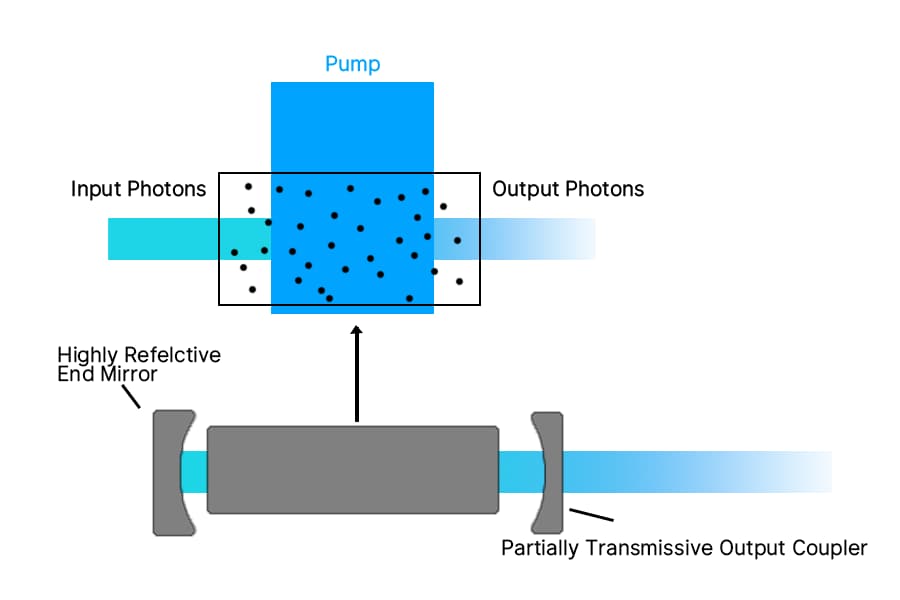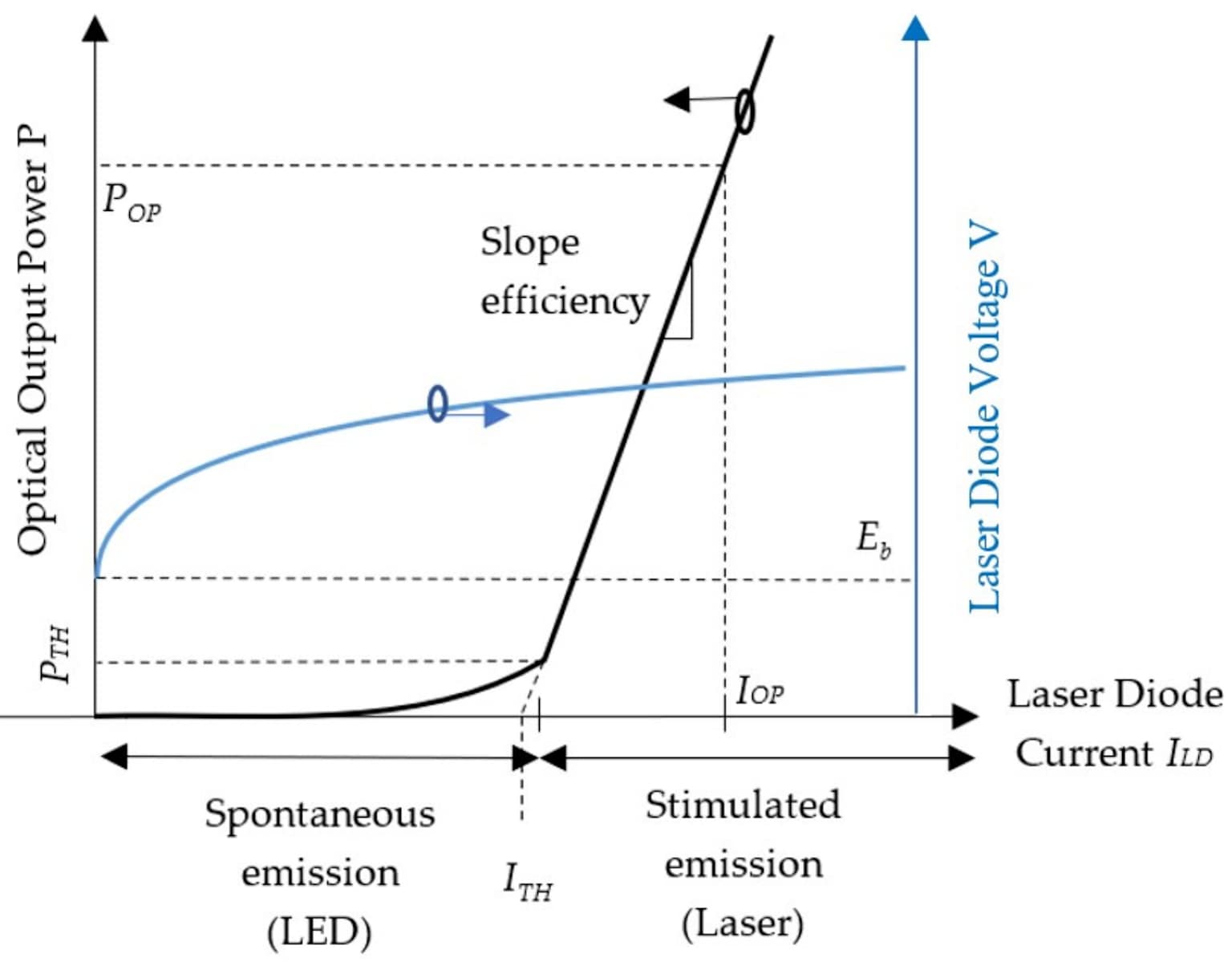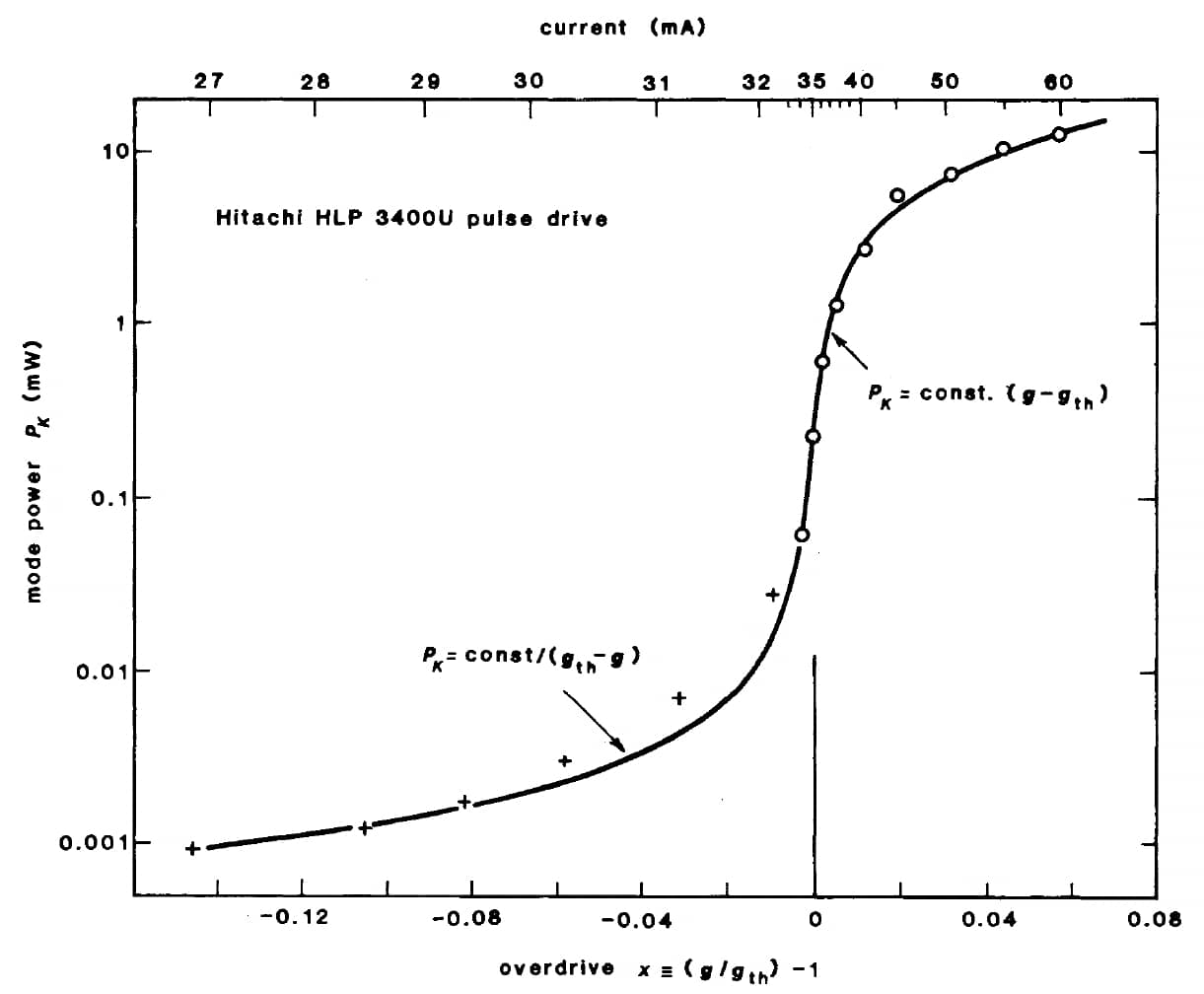Laser threshold is one of most fundamental & critical concepts on laser physics. It marks precise point where an device transitions from incoherent light source to coherent laser system. This article delves into physics behind laser threshold behavior, engineering considerations for optimal design, and practical implications for modern laser uses across fields like telecommunications & industrial manufacturing.
Laser threshold condition happens when optical gain inside laser cavity exactly balances total optical losses. This creates critical point where sustained laser oscillation becomes possible. At this threshold, small - signal gain coefficient precisely equals round - trip losses in resonator. It establishes minimum energy input needed for laser action to start. This balance point is a fundamental phase transition on optical system. It transforms amplified spontaneous emission into coherent stimulated emission.
Threshold condition can be mathematically expressed through round - trip gain equation. The product of mirror reflectivities, active medium gain, and cavity transmission factors must equal unity for sustained oscillation. For optically pumped lasers, this translates to specific threshold pump power. Electrically pumped devices need threshold current to achieve this critical balance. Precision of this balance point makes threshold a highly sensitive parameter. It reflects overall efficiency & design quality of laser system.

Understanding threshold behavior needs examining population inversion dynamics inside gain medium. Below threshold, only partial population inversion exists. It’s insufficient to overcome cavity losses. At threshold, population inversion reaches exactly level needed to balance losses. Above threshold, strong population inversion is maintained through gain clamping mechanisms.
Gain coefficient on laser medium depends fundamentally on population difference between energy levels & stimulated emission cross - section. Mathematical relationship ( G = \sigma_e(N_2 - N_1) ) describes how gain relates directly to population inversion. Here, ( \sigma_e ) represents emission cross - section. ( N_2 ) and ( N_1 ) are population densities of upper & lower laser levels respectively.
Threshold gain coefficient can be calculated using expression ( g_{th} = \alpha_i + \frac{1}{2L}\ln\left(\frac{1}{R_1R_2}\right) ). ( \alpha_i ) represents internal losses. ( L ) is cavity length. ( R_1, R_2 ) are mirror reflectivities. This equation separates losses into distributed internal losses & discrete mirror losses. It gives designers clear targets for optimization.
For four - level laser systems (most efficient laser configuration), threshold pump power can be calculated using relationship ( P_{p,th} = \frac{h\nup A l{rt}}{\eta_p \tau2 \sigma{em}} ). It incorporates photon energy, beam area, cavity losses, pump efficiency, upper - state lifetime, and emission cross - section parameters. This formula shows how multiple physical parameters contribute to determining threshold condition.
Round - trip condition for laser oscillation requires that ( R_1R2\exp(2g{th}l)\exp(-2\alpha l) = 1 ). It explicitly shows how gain must compensate for both mirror losses & distributed cavity losses. This fundamental relationship guides all aspects of laser cavity design & optimization.
Transition through laser threshold shows dramatically different characteristics in three distinct operating regimes. Each has unique optical properties & applications.
Below threshold condition, laser operates mainly through amplified spontaneous emission (ASE). It produces incoherent light with broad spectral bandwidth & poor beam quality. Output power increases only slowly with pump power. It follows approximately quadratic behavior due to limited population inversion. Spectral characteristics stay broad, typically spanning 10–100 nanometers. Temporal & spatial coherence properties are poor.

At threshold point, system undergoes critical transition where gain exactly balances loss. This is an inherently unstable operating point. Small perturbations can cause large fluctuations in output power. Spectral bandwidth starts to narrow significantly. Coherence properties begin to develop as stimulated emission starts to dominate over spontaneous processes.
Above threshold, laser operation enters stimulated emission regime. It’s characterized by high efficiency, excellent beam quality, and stable output power that increases linearly with pump power. Slope efficiency (rate of output power increase with respect to input power) becomes a critical performance parameter. Spectral bandwidth narrows dramatically to 0.01–1 nanometer ranges. Temporal & spatial coherence reach excellent levels suitable for demanding applications.

Gain clamping phenomenon above threshold ensures that gain coefficient stays precisely at threshold value, regardless of increased pumping. This creates stable operating conditions. Excess pump power directly converts to useful laser output instead of further increasing gain.
Achieving low threshold operation needs careful optimization of multiple interrelated parameters. It creates complex engineering trade - offs that must be balanced for specific applications. Primary approaches for threshold reduction include minimizing cavity losses & maximizing gain efficiency through strategic design choices.
Cavity loss reduction involves optimizing mirror reflectivity, minimizing scattering & absorption losses, and careful attention to alignment & thermal management. High - reflectivity mirrors with low absorption losses directly reduce threshold gain requirement. Improved cavity design reduces parasitic losses that otherwise elevate threshold.
Gain efficiency maximization relies on optimizing spatial overlap between pump & laser modes, using efficient gain media with favorable spectroscopic properties, and minimizing mode area to concentrate gain. Small laser mode areas on highly efficient gain media with limited emission bandwidth provide most favorable conditions for low threshold operation.
Optimization of laser output power for given pump power typically involves balancing high slope efficiency against low laser threshold. This trade - off happens because design choices that reduce threshold may simultaneously reduce slope efficiency. It needs careful analysis of specific application requirements.
Advanced optimization must also consider pulse duration requirements in Q - switched lasers, avoidance of Q - switching instabilities in mode - locked systems, and minimization of thermal effects that can degrade performance. These factors often impose additional constraints on threshold design, especially in high - power applications where thermal management becomes critical.
Recent advances on laser physics have introduced sophisticated approaches to threshold manipulation. This includes development of threshold - free laser systems using microcavity technology. These systems use photonic band gap structures in photonic crystals to suppress spontaneous emission into unwanted modes while enhancing emission into desired laser mode.
Microcavity lasers achieve ultra - low thresholds by modifying local density of optical states around gain medium. They force spontaneous emission to occur mainly into laser mode instead of into continuum of radiation modes. Experimental demonstrations have achieved threshold pump powers as low as 1.2 μW in photonic crystal nanolasers and threshold currents of 36 μA in vertical cavity surface - emitting lasers.

Single - atom laser represents ultimate limit of threshold reduction. It was demonstrated in 2003 with genuinely zero threshold pump power. This achievement relies on quantum optical phenomena where even single atoms can maintain coherent emission under appropriate cavity conditions.
Superradiant laser systems offer another approach to thresholdless operation. They use phase - correlated atomic ensembles to maintain coherent emission regardless of intracavity photon number. These systems show coherent photon statistics even when mean photon numbers fall well below unity, challenging conventional threshold definitions.
Most practical laser systems operate at pump powers 3–10 times above threshold. This ensures reliable, stable operation with good power efficiency & low noise characteristics. This operating range provides optimal balance between efficiency & stability while avoiding problems associated with operation too close to threshold.
Choice of operating point above threshold depends on specific application requirements & system constraints. Industrial applications typically favor operation at moderate multiples of threshold to maximize wall - plug efficiency. Scientific applications may need operation at higher pump levels to achieve maximum output power or specific temporal characteristics.
Thermal effects become increasingly important at high operating powers. They can cause threshold drift & instability. Active thermal management through cooling systems & careful heat - sink design maintains stable threshold conditions under high - power operation.
Quality control & performance monitoring often involve periodic measurement of threshold characteristics through slope efficiency analysis. Changes in threshold pump power can indicate degradation of optical components, alignment drift, or other system issues needing maintenance.
Laser threshold is a fundamental phase transition that governs operation of all laser systems—from simple laser pointers to sophisticated industrial & scientific instruments. Understanding threshold physics lets engineers optimize laser designs for specific applications. They balance factors like efficiency, power output, beam quality, and stability. Advanced threshold manipulation techniques (like microcavity designs & quantum optical approaches) keep pushing boundaries of what’s possible in laser technology. They open new applications in quantum optics, nanophotonics, and ultra - low - power optical systems. As laser technology evolves, principles governing threshold behavior stay central to achieving optimal performance across diverse landscape of modern photonic applications.
Contact: Jason
Phone: +8613337332946
E-mail: [email protected]
Add: Hangzhou City, Zhejiang Province, China